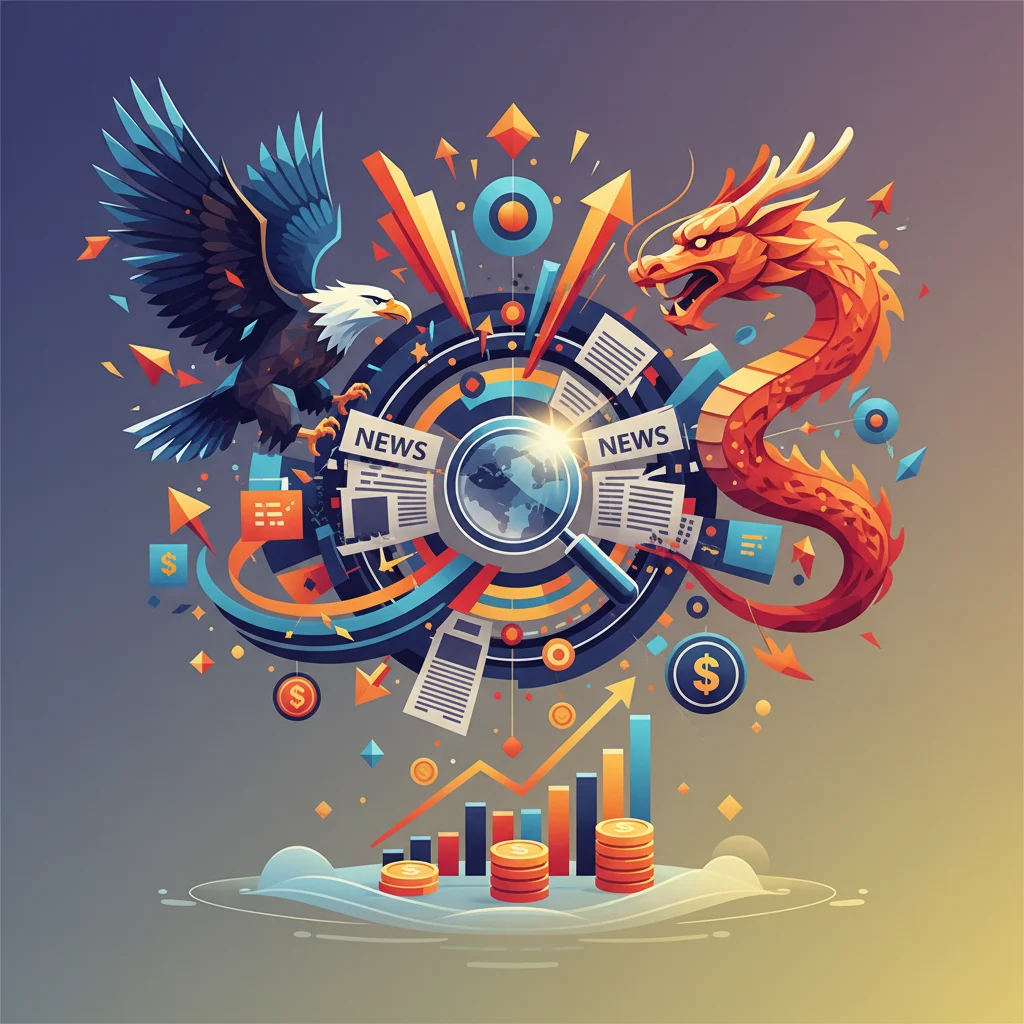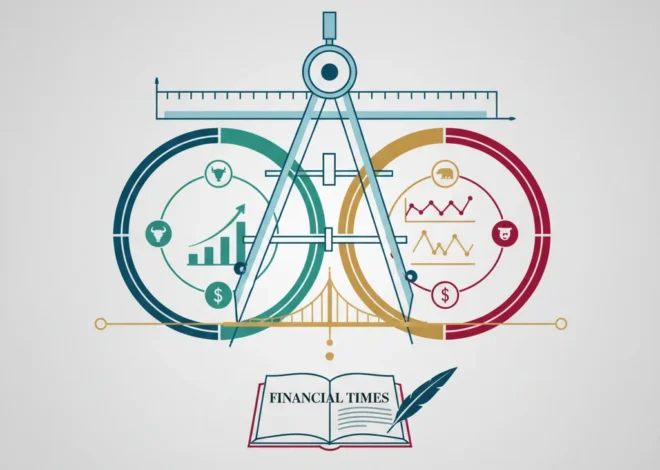
Beyond the Headlines: A Deep Dive into the New U.S.-China Trade Spat and Your Investment Strategy
For investors who navigated the turbulent markets of 2018 and 2019, the recent headlines feel like a jarring case of déjà vu. The spectre of a U.S.-China trade war, once thought to be dormant, is re-emerging, sending ripples of uncertainty across the global financial landscape. A recent report from banking giant UBS has put a name to the market’s anxiety, noting that renewed trade tensions are triggering a distinct “risk-off” mood among investors. This isn’t just background noise; it’s a critical development with profound implications for the stock market, the broader economy, and your personal investment portfolio.
The catalyst for this renewed unease is the Biden administration’s consideration of significant tariff hikes on a strategic list of Chinese goods, including electric vehicles (EVs), solar panels, and critical metals like steel and aluminum. This move signals a continuation, and perhaps an escalation, of a complex economic and geopolitical rivalry.
In this comprehensive analysis, we will move beyond the headlines to dissect what this new chapter in U.S.-China relations truly means. We’ll explore the mechanics of a “risk-off” market, identify the sectors most exposed to these trade winds, and provide actionable insights for investors and business leaders seeking to navigate the storm.
The New Front in an Old Economic War
The core of the issue lies in a strategic pivot by the U.S. government. While the previous trade war was broad, this potential new round of tariffs is highly targeted at sectors central to the future of the global economy. According to reports, the administration is weighing these measures as part of a review of the “Section 301” tariffs imposed under the Trump administration (source).
Why these specific sectors? The rationale is multifaceted:
- Economic Competition: China has established a dominant position in the production of EVs and solar components, often with the help of significant state subsidies. The tariffs are intended to level the playing field and protect nascent American industries in these high-growth areas.
- National Security: There is a growing concern in Washington about over-reliance on a geopolitical rival for critical technologies and infrastructure, particularly in the green energy transition. Building a domestic supply chain is seen as a matter of national security.
- Domestic Politics: With a presidential election on the horizon, taking a tough stance on China and protecting American jobs, particularly in manufacturing states, is a potent political strategy.
This strategic targeting is precisely why financial institutions like UBS are sounding the alarm. Unlike broad-based tariffs that impact consumer goods generally, these measures strike at the heart of the world’s most critical supply chains and the future of industrial technology, creating a more concentrated and unpredictable form of risk for the stock market.
Decoding “Risk-Off” Sentiment: A Practical Guide for Investors
The term “risk-off” is frequently used in financial news, but what does it mean in practice? It describes a shift in investor behavior where the collective appetite for risk diminishes. Instead of seeking high growth and high returns, the market’s primary motivation becomes capital preservation. Fear and uncertainty replace optimism and greed as the dominant emotions driving trading decisions.
In a risk-off environment, capital flows out of assets perceived as volatile or speculative and into assets considered “safe havens.” This rotation can have a dramatic effect on asset prices across the board. The table below illustrates the typical re-allocation of capital during these periods.
Comparing Risk-On vs. Risk-Off Asset Classes
| Asset Category | “Risk-On” Environment (High Confidence) | “Risk-Off” Environment (High Uncertainty) |
|---|---|---|
| Equities | Technology, Consumer Discretionary, Emerging Markets, Small-Cap Stocks | Consumer Staples, Utilities, Healthcare (Defensive Stocks) |
| Fixed Income | High-Yield (Junk) Bonds, Corporate Bonds | U.S. Treasury Bonds, German Bunds (Sovereign Debt) |
| Currencies | Australian Dollar (AUD), Canadian Dollar (CAD) (Commodity Currencies) | U.S. Dollar (USD), Japanese Yen (JPY), Swiss Franc (CHF) |
| Commodities | Industrial Metals (Copper), Oil | Gold, Silver (Precious Metals) |
| Alternative | Cryptocurrencies, Venture Capital | Cash and Cash Equivalents |
The current market jitters reflect a classic move towards the right-hand column of this table. Investors are selling off shares in high-growth tech and EV companies with complex international supply chains and seeking refuge in the perceived safety of government bonds and defensive sectors. Understanding this dynamic is the first step toward making informed decisions rather than emotional ones.
The Ripple Effect: Sector-Specific Impacts and Economic Consequences
While the headline risk affects the entire market, the proposed tariffs will create clear winners and losers across specific industries. The fallout extends far beyond the corporate headquarters of Beijing and Washington, impacting global supply chains, inflation, and the pace of the green energy transition.
The Electric Vehicle (EV) Battleground
A tariff on Chinese EVs would be a direct challenge to companies like BYD, Nio, and XPeng, which are beginning to make inroads into global markets. While their direct U.S. market share is currently small, the fear is of a flood of low-cost, high-tech vehicles undercutting American and European automakers. For U.S. companies like Tesla, which has a massive factory in Shanghai, the risk comes from potential retaliatory tariffs from Beijing, which could harm its access to the world’s largest auto market.
The Double-Edged Sword in Renewable Energy
The solar industry presents a complex dilemma. China dominates the global solar supply chain, from polysilicon to finished panels. Tariffs could protect and incentivize U.S. solar manufacturers, a key goal of the Inflation Reduction Act. However, they would almost certainly increase the cost of solar projects in the short-to-medium term, potentially slowing the U.S. transition to renewable energy (source). This highlights the inherent tension between industrial policy and climate goals.
Broader Economic Tremors
Beyond these specific sectors, the macroeconomic implications are significant. Tariffs are a tax that can lead to higher prices for businesses and consumers, adding to inflationary pressures that central banks are desperately trying to control. This uncertainty also forces a costly and time-consuming re-evaluation of global supply chains, a trend often called “re-shoring” or “friend-shoring.” This long-term shift in global trading patterns is a fundamental change to the landscape of international economics.
The Role of Financial Technology in Navigating a Volatile World
In this fast-moving environment, the evolution of financial technology (fintech) provides investors with more tools than ever to manage risk. Modern investing platforms offer retail investors access to a diverse range of assets that were once the exclusive domain of institutional players. Through fintech applications, an investor can hedge their equity portfolio by seamlessly trading commodities like gold or investing in international government bonds.
Furthermore, the world of algorithmic trading is driven by news sentiment analysis. Sophisticated algorithms can scan millions of data points—from news articles to government statements—in milliseconds, executing trades based on shifts in geopolitical risk. This high-frequency activity contributes to the short-term volatility but also reflects the market’s efficiency in pricing new information. On a larger scale, technologies like blockchain are being explored to create more transparent and resilient supply chains, offering a potential long-term technological solution to the very geopolitical risks that are currently plaguing the market.
Actionable Strategies for a New Era of Trade
Navigating this environment requires a strategic, not a reactive, mindset. Panic-selling is rarely a winning formula. Instead, both investors and business leaders should focus on resilience and long-term positioning.
For Investors:
- Prioritize Diversification: This is the time to review your portfolio’s geographic and asset class diversification. An over-concentration in sectors highly dependent on U.S.-China trade is a significant vulnerability.
- Focus on Quality and Pricing Power: In an inflationary environment, companies with strong balance sheets, low debt, and the ability to pass on increased costs to customers (pricing power) are best positioned to weather the storm.
- Stay Informed, Not Glued to Headlines: Understand the underlying trends—the push for supply chain resilience, the green energy race—rather than reacting to every tweet or news alert. This long-term perspective is crucial for sound investing.
For Business Leaders:
- Audit Your Supply Chain: The era of relying on a single country for critical components is over. Leaders must actively invest in diversifying suppliers and manufacturing locations to build resilience.
- Engage in Scenario Planning: Model the financial impact of various tariff scenarios (e.g., 25%, 50%, 100% tariffs on key inputs) to understand your company’s breaking points and develop contingency plans.
- Communicate Proactively: Be transparent with investors, customers, and stakeholders about the risks you face and the steps you are taking to mitigate them. Strong guidance and clear communication are essential for maintaining market confidence.
Conclusion: The Only Constant is Change
The renewed trade tensions between the U.S. and China are more than a passing market storm; they represent a fundamental shift in the global economic and geopolitical order. The “risk-off” sentiment identified by UBS is the market’s natural reaction to the end of an era of hyper-globalization and the dawn of a new age of strategic competition.
For those involved in finance, investing, and business leadership, this new reality demands a more sophisticated understanding of how politics and economics intersect. Success will not be defined by timing the market’s every move, but by building resilient portfolios and businesses that can adapt and thrive amidst uncertainty. By focusing on diversification, quality, and long-term strategic trends, it is possible to navigate these turbulent waters and emerge stronger on the other side.


